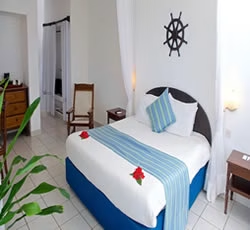10 Best Reasons to Visit Samburu National Reserve
An Overview of Samburu National Reserve
Samburu National Reserve lies in Kenya’s north tourism frontier. Samburu is a must visit on a safari holiday to Kenya. Known for its unique and enchanting destination for wildlife, nature, culture and intrepid adventures. Home to the Samburu people, closely similar to the Maasai people, but with many realistic differences to have them stand out as their own.
The country here is empty and wild, a place of baked brown earth and parched vegetation. The silence is almost eerie and at first you might think this whole new world is empty. However, an exploration will change your mind. Samburu National Reserve, the adjoining Buffalo Springs National Reserve and Shaba National Reserve share the same authoritative park management jurisdiction and complement each other greatly with their contrasts.
A visit to Samburu can be one of Kenya’s most rewarding safari experience. The Samburu ecosystem and biodiversity gets its life-line from the River Ewaso N’giro which traverses the park. The river banks are naturally beautified by a permanent ribbon of green, with tamarinds, doum palms and acacia providing respite from the sweltering sun and a profusion of wild game.
Apart from its unique wildlife offering, Samburu is rugged and highly photogenic. This is one Kenya’s destination attraction that is highly recommended for individual visitors, travel writers, photographers and film makers, couples seeking an intimate, secluded, lost-and-found paradise, families with or without children and any other soul seeking a twist of nature’s gifting.
The Faces of Samburu
These northern Kenya game reserves offer a plethora of game and the bird life is prolific. The blue colours of the vulturine guinea fowl are doubly striking as they contrast so vividly with the surrounding muted white and brown landscape. The superb starlings and Kenya violet-backed sunbirds add a celebration of colour to this stark land. The following day we head out to Shaba National Reserve, this small reserve is where Joy Adamson lived and sadly died, while she was documenting the release of Penny. the leopard that she had hand reared, back into the wild. The roads of Shaba are made of volcanic rubble, as you bounce along these tracks the landscape changes again; the tectonic turmoil from eons past is more starkly visible here. Hills dominate; the flat areas are dazzling white with powdery sand interspersed with sparse vegetation. This reserve is beautifully stark and desolate, a feeling of tranquillity settles over you as you drive over the rutted track with no other vehicles visible, the isolation and remoteness is palpable.
A Grevy's zebra stands alone, defending his territory from other males and hoping for some passing females to come his way. The comical large ears twitching on either side of his long sad looking face, reflects how vulnerable this species is. In a brittle leafless forest glade, the birdsong is sweet music to my ears. As we arrive at one of the numerous swamps, the area is full of buffalo grazing contently on the green juicy grass. Excitedly I spy some movement in the long grass, it looks like the flick of a tail. With my binoculars out, I focus on the spot and see a leopard lying on the thicket gazing at the baby buffalo.As the sun begins to cool, we climbed up Turkana Hill, where the summit allows a 360o view across the area, we enjoyed the novel experience of being able to see Mount Kenya in the far distance, have a true panoramic view, surveying all around us, and see no sign of human habitation. It is truly breathtaking.
The three game reserves of Shaba, Buffalo Springs and Samburu plus Kalama Conservancy offer such surprisingly distinct topography, vistas and wildlife sightings from the rest of Kenya and even from each other, no wonder they are a popular tourist destination.
Why visit Samburu National Reserve? Here are 10 Compelling Reasons:
1. A Truly Serene & Offbeat Destination
Mass tourism is common in Masai Mara National Reserve especially during the peak season of July to October owing to the presence of migration herds from Serengeti, Tanzania and the heighted activity of terrestrial, aerial and riverine predators.
Samburu is a less congested environment, making it ideal for tourists who prefer a more private and intimate wildlife viewing experience. Receiving lesser visitor numbers than other famous parks of southern Kenya makes this destination pretty exclusive and intimately quieter.
2. Dramatic Landscapes, Scenery & Transitions
Leaving the hustle, bustle, noise and congested traffic of Nairobi behind and hitting the open road towards Isiolo Town and the Archer’s Post Gate is an eyeful adventure, visually stimulating and highly photogenic.
The drive from Nairobi is about 310km taking about 5-6 hrs with a brief stop at the Equator may seem long, but it can be very interesting travelling on the Thika Super Highway passing farmlands, ramshackle shopping centres, markets, and rural provincial towns. Crossing River Sagana, an 80km length river which is a tributary of the 1000km River Tana (Kenya’s longest river), urging norther until the rugged peaks of Mount Kenya become visible.
The contrast of lush green plantations, farmlands, rugged impossible habitations, outcrops, deep quarries create a wonderful mosaic until the road climbing past the drier south central Kenya into the upper highlands, which richly bless Kenya as an agricultural hinterland and food basin.
An array of roadside markets provide travelers with fruits and vegetables of all kind and the colors of central Kenya. Past Nanyuki town into Meru County and driving up the colder Timau region and going up to Isiolo Country is a transition into hot, semi-arid and rugged landscapes to Archers Post Gate of Samburu National Reserve.
.
3. Unique Flora & Fauna
Flora
Samburu’s flora consist of Acacia Woodlands with the dominant species being the Acacia tortilis (Umbrella Thorn Acacia) which provides habitat for various wildlife including birds and herbivores. Samburu National Reserve and its adjoining parks are also graced by Savannah Grasslands with varieties of tall grasses that support grazing animals. Riverine Forests found along the banks of the Ewaso Ng'iro River is home to the species like Ficus (fig trees), Sycamore trees and the legendary Doum Palm tree. This is a unique and striking plant characterized by its fan-shaped leaves and distinctive trunk whose leaves are used by local communities for thatching roofs and making baskets. The fruit of the Doum Palm is edible and serves as a food source for both wildlife and local people. The tree also provides shade and habitat for various bird species and greatly contributes to the overall biodiversity of the reserve.
Dwarf Shrub-lands are common in Samburu National Reserve. These are low-growing shrubs well adapted to dry conditions. Common species include Commiphora and Boscia. Other adapted desert and semi-desert vegetation includes drought-resistant plants such as aloe and various succulents. Most unique flora of Samburu is a special plant, the Samburu Arrow Poison Tree (Dracaena afromontana). It typically features slender, tall trunks with a crown of long, narrow leaves at the top. The leaves are sword-shaped and can grow up to 1 meter long. This tree is commonly found in dry, rocky areas, especially in the Samburu National Reserve thriving in its warm climate and well-adapted to arid conditions. The sap and parts of the tree are traditionally used by the Samburu people to make poison for their hunting arrows.
Samburu people, like their Maasai counterparts have deep knowledge of herbal medicines which are used as purgatives, emetics, analgesics, and salves. Common medicinal plants in this and surrounding areas are scholarly named here - https://www.ncbi.nlm.nih.gov/pmc/articles/PMC2412850/
Fauna
Home to the christened ‘Samburu Special Five’: Grevy's zebra, Somali ostrich, reticulated giraffe, gerenuk, and the Beisa oryx. Many visitors to Africa on a wildlife safari keep leopard sighting on top their wish-list. Samburu is often named as one of the best places in Africa and obviously the leader in Kenya for leopard sightings. The rock outcrops and the trees provide a strategic hiding place for hunting. Include Samburu National Reserve on your bucket list if you wish to see the elusive leopard.
Include photo gallery of special 5 here.
Samburu National Reserve
African Elephant: Approximately 900 elephants are found in the reserve.
Lion: Regularly sighted, with a notable population of prides.
Leopard: Commonly seen, especially along riverbanks.
Reticulated Giraffe: One of the key species, adapted to the local environment.
Grevy's Zebra: A rare species, part of the Samburu Special Five.
Beisa Oryx: Well-adapted to arid conditions.
The Somali Ostrich (Struthio camelus molybdophanes), a subspecies of the common ostrich, is indeed present in large numbers at Reserve. Preferring open savannahs and grasslands, these well-adapted to the semi-aridity of Samburu are often sighted roaming in groups.
Buffalo Springs National Reserve
Buffalo Springs is adjacent to Samburu and shares many wildlife species. Key species include:
African Elephant: Abundant in the reserve.
Grant's Zebra: Commonly seen grazing in the grasslands.
Reticulated Giraffe: Frequently spotted in the area.
Lion: Occasional sightings, particularly near water sources.
Cheetah: Rare but present, often seen hunting in open areas.
Waterbuck: Commonly found near the riverbanks.
Shaba National Reserve
Shaba is known for its lush vegetation and diverse wildlife. Common species include:
Elephant: Frequently seen along the Ewaso Ngiro River.
Beisa Oryx: Particularly well-adapted to the dry environment.
Grant's Zebra: Commonly found in the reserve.
Reticulated Giraffe: Often spotted in the more wooded areas.
Lion: Large prides can be seen resting in the thickets.
Crocodiles and Hippos: Commonly found in the river.
4. Rewarding Birding Experience
Samburu National Reserve & Buffalo Springs National Reserve qualified in 1999 meeting the criteria that gives it Important Bird Area (IBA) status in Kenya. The 29,600ha areas promises a rewarding birding experience for both amateur and experienced birdwatcher. With its diversity of species, unique habitats, and stunning landscapes, Samburu provides a value-for-money birding adventure in Kenya.
Samburu is home to over 400 bird species, including both resident and migratory birds. Notable species include the Vulturine Guineafowl, Somali Ostrich, African Fish Eagle, and Lappet-faced Vulture. Samburu's diverse ecosystem (Ewaso River - a hotspot for waterbirds and raptors, Acacia Woodlands for various species including parrots and hornbills, open grasslands and the rocky areas too) do offer a natural birding paradise, research and avian photography. The unique lighting conditions during sunrise and sunset provide excellent photographic opportunities.
5. Scenic Park Vistas & Seasonal Changes
Hills and rocky outcrops adorn the landscapes with an abandon feel. Sights here are highly breathtaking especially for those visiting tropical savannah Africa for the first time. Samburu is a popular spot for photography and sightseeing. Capturing a tall beautiful and graceful giraffe foraging the top of a thorny tree, a Gerenuk with its tall neck adapted for top-layer feeding or a mud-bath of elephants as they cool and cross the Ewaso against a backdrop of natural props makes Samburu worth of a visit.
Depending on the season and weather patterns, the landscapes of Samburu undergo dramatic transformations. During the rainy season, the area becomes lush and vibrant, while in the dry season, it appears parched and stark. These seasonal changes influence wildlife migration patterns, as animals move in search of water and grazing. The drier seasons brings about a concentration of wildlife close to the Ewaso where most befitting lodges and tented camps are situated.
Samburu has rich colors and textures both natural and human. Expect to witness vibrant sunsets
characterized by vibrant shades of orange, pink and purples. Earthy tones create a palette mixture of grassy plains, rocky hills, and riverine forests provide a rich tapestry that enhances the reserve's overall beauty.
6. Rich Cultural Experiences
The Samburu people's culture and traditions are rich and diverse, deeply rooted in their pastoral way of life. Their social structure, clothing, rites of passage, music, and spiritual beliefs reflect their close connection to nature and community. Through their vibrant customs and practices, the Samburu continue to preserve their unique identity and heritage in the face of modernization. To have a first-hand, face to face cultural immersion with the Samburu people is a major reason and a must visit while on safari holiday in Kenya.
Highlights of Samburu Culture
Livelihood: The Samburu primarily rely on livestock herding, particularly cattle, goats, and sheep, which are central to their economy and social status.
They practice transhumance, moving with their herds to find grazing pastures and water.
Social Structure: The community is organized into clans, each with its own lineage and traditions.
Elders hold significant authority and are responsible for decision-making, conflict resolution, and community leadership.
Traditional Attire: Samburu people are known for their distinctive clothing and adornments, often wearing brightly colored shukas (cloaks) and beads.
Beadwork is an essential aspect of their identity, with intricate designs that signify social status and age.
Rites of Passage: Important life events are marked by elaborate ceremonies, including circumcision, initiation, and marriage.
The initiation ceremonies, particularly for young men (known as warriors or morans), are significant, involving tests of bravery and endurance.
Music and Dance: Music and dance play a vital role in Samburu culture, often performed during ceremonies and celebrations. Traditional songs reflect their experiences and connection to nature, using instruments like drums and flutes. The Samburu people, much like the Maasai, perform a traditional jump dance known as the "Eng'ang'it". This dance is meant to showcase strength, agility, and unity. Even among other tribes in kenya, the Samburu and Maasai dance style serves as a great way to entertain and express cultural identity. Chanting and clapping, impressive vertical leaps while maintaining rhythm with a traditional song is a special in-born chereography unseen and unparalled in the entire world. Suffice to say that the "Eng'ang'it" symbolizes bravery and masculinity, particularly among young warriors (morans) who use it to demonstrate physical prowess and woo potential brides
Storytelling and Oral Traditions: Common among most African tribes is the art of oral storytelling and folklore preservation. A posterity through learning essential history, morals, and cultural knowledge within the Samburu community is a common and can be very rewarding for a visitor to experience. Folktales often feature animals and convey important life lessons.
Craftsmanship & Natural Talent: The Samburu are skilled artisans, creating beautiful crafts such as beaded jewelry, traditional weapons, and woven items.
These crafts are not only functional but also serve as cultural expressions. It is often argued what truly constitues a high IQ. The modern world considers the scientist, mathematician, doctor, engineer and the economist as geniuses in their adapted modernity. No argument, but what of a hunter and gatherer who survives most extreme conditions, can take a bird off the sky with a rudimentary club, through a spear or shot an arrow at that elusive animal, light a fire without matches and take meat from a pride of lions (See clip: https://youtu.be/y3MTDFNf71I and visit https://www.maasai-association.org/lion.html - preserving the heritage & culture of the Maasai people)?
7. Freedom of Choice in Accommodations: Where to Stay
A good reason to visit Samburu National Reserve while on safari holiday in Kenya is its classic and diverse range accommodations. From the deep pocket to the overlander, special theme traveler (family, honeymoon, cultural, photography, conservation and sustainable tourism), Samburu delivers. Classic, opulent and elegant accommodations offering best value for a safari. This variety means greater freedom and choice when visiting Samburu
Classic & Luxurious Accommodations in Samburu National Reserve
Samburu Sasaab by The Safari Collection with a USD range of 1100-1600 per person per night
Set on the north bank of the Ewaso Ngiro River on a village conservation area to the west of the Samburu area of northern Kenya, Sasaab is a very stylish and unusually relaxing place, with guest accommodation in 8 rooms and providing access to a wide range of well-guided activities. Elegantly hosted. No minimum age.
Elephant Watch Camp with a USD range of 1300-1500 per person per night
An eco-friendly camp that emphasizes conservation and the protection of elephants, located in a prime wildlife area by the north bank of the Ewaso Ngiro River in the Samburu National Reserve. Elephant Watch Camp is truly a small intimate, private, elegant and spirited place, with guest accommodation in 6 tents only that blend seamlessly with the environment. It is currently and personally by Saba Douglas-Hamilton. No minimum age.
Saruni Samburu with a USD range 800-1100 per person per night
Set in a dramatic position on the enormous Kalama Conservancy to the north of the Samburu area of northern Kenya, Saruni Samburu is one of the most architecturally impressive properties in East Africa, with guest accommodation in 10 rooms and providing access to a wide range of well-guided activities. Private vehicles. Minimum age 7
Elephant Bedroom Camp with a USD range of 600-900
Set under doum palms on the north bank of the Ewaso Ngiro River in the Samburu area of northern Kenya, Elephant Bedroom Camp is an intimate camp, pleasant best-value facility, with guest accommodation in 12 luxury tents with private decks overlooking the river. No minimum age.Soroi Larsens Camp with a USD range of 600-800
Set in a dense stand of riverine forest on the north bank of the Ewaso Ngiro River in the Samburu area of northern Kenya, Larsen's Camp is a decent mid-range facility, with guest accommodation in 20 tented rooms and providing access to a modest range of safari activities.
Mid Range Accommodations in Samburu National Reserve
Ashnil Samburu from USD 200 per person per night
Set on the south bank of the Ewaso Ngiro River in the Samburu area of northern Kenya, Ashnil Samburu Camp is a decent quality commercial facility, with guest accommodation in 20 rooms and providing access to a modest range of safari activities.
Samburu Simba Lodge from USD 170 per person per night
Set on the south bank of the Ewaso Ngiro River in the Samburu area of northern Kenya, Samburu Simba Lodge is a large and commercial facility, with guest accommodation in 40 rooms and providing access to a modest range of safari activities. Mainly caters to budget overland safaris.
Samburu Sopa Lodge from USD 180 per person per night
Set on an open hillside in the Samburu area of northern Kenya, Samburu Sopa Lodge is a large and commercial facility, with guest accommodation in 60 rooms and providing access to a modest range of safari activities. Mainly caters to budget overland safaris.
Sarova Shaba Lodge from USD 170 per person per night
Set on the south bank of the Ewaso Njiro River in the Shaba area of northern Kenya, Sarova Shaba Game Lodge is a large and commercial facility, with guest accommodation in 84 rooms and providing access to a modest range of safari activities. Mainly caters to budget overland safaris.
8. Interlinking with Close Attractions
The way of the northern tourism circuit provides close interlinking with a wide variety turnkey attractions of Laikipia from the south, east, west and further north from Solio Ranch, Mt. Kenya National Park, Aberdare National Park and the private / community conservancies of Olpejeta Conservancy, Lewa Wildlife Conservancy, Borana Conservancy, Kalama, Il Ngwesi and is also very close to Meru National Park to the South East. This is a good reason to visit and experience the northern frontier's diversity without travelling for long distances.
Further north from Archers Post, visitors to the region can move up to Matthews Range (stretching across Samburu, Laikipia & Isiolo Counties) and stay in exclusive serene, offbeat locations like the glorious Sarara Camp, Sarara Reteti, Sarara Treehouses, Kitich Camp and participate in various activities as a family, couple or travelling small group. The town of Wamba to the Matthews Range attractions and accommodations is about 110km from Archers Post.
A unique beloved activity is the Rock Slide at Ngurnit, the only natural water slide in Eastern Africa. The Ngurunit rock slide consists of smooth, sloping rocks that allow for sliding, creating a fun and adventurous experience for visitors.
The surroundings are pleasantly scenic against the backdrop of the Ndoto Mountains, making it not only a geological wonder but also a picturesque location. Its cascading ponds features cool waters that cascade from the mountains, forming natural pools where visitors slide and swim.
9. Affordable Park Fees
Unlike the other major parks and conservancies, the park entry fees to Samburu are pretty low at
Adults (non-resident): USD 70 per person for a 24-hour period.
Children (non-resident): USD 40 per child (under the age of 12) for a 24-hour period.
This is a significant saving and good reason for individuals, families, couples or groups intending to explore the area for several days.
10. Opportunity to Participate or Contribute to Sustainable Tourism & Worthy Causes
A great and worthy reason to visit Samburu National Reserve or its neighboring conservancies is because a visit there is a direct or indirect support to the local people. Tourism without responsibility and sustainability is an insult to nature, its endowments and the peoples.
Northern Rangelands Trust (NRT) is one of the organizations that supports community conservancies in Samburu County, helping to manage natural resources sustainably and promote wildlife conservation. There several Community Conservancies that work to promote wildlife and environmental conservation, fight against poaching, improve community welfare and promote dignity among residents. They notable include,
- Kalama Conservancy
- Westgate Conservancy
- Nkoteiya Conservancy
- Sera Conservancy
- Meibae Conservancy
Others taking the front seat in noble work include, The Grevy's Zebra Trust - This organization works specifically to conserve the endangered Grevy's zebra and its habitat, fostering community involvement in conservation efforts.
Ewaso Lions - A community-based organization that focuses on lion conservation and mitigating human-wildlife conflict in the region.
Ol Malo Trust - Founded by Julia Francombe, this trust partners with local communities to protect their land and promote sustainable practices.
Finally, a special applause to the Sarara Foundation for its impactful commitment to integrating community involvement, wildlife conservation, and cultural preservation in its sustainable tourism initiatives makes the organization a true leader in the region. By prioritizing the needs of local communities while promoting responsible travel, the foundation has already set a benchmark for leveraging sustainable tourism practices in Samburu County and beyond.
With these 10 reasons, we strongly recommend a visit to Samburu by individuals, researchers, photographers, families, couples, honeymooners and small groups to visit this chic Kenya destination



























